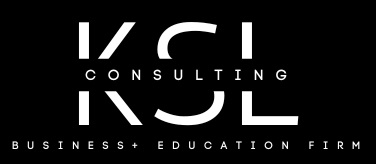In the bustling world of early childhood education, administrators face the dual challenge of providing high-quality care while managing complex operations. Striking the right balance between high-tech and low-tech solutions can significantly enhance the efficiency and effectiveness of early childhood programs. Here’s how both high-tech and low-tech tools can be leveraged to streamline operations and improve program management.
High-Tech Solutions
Incorporating high-tech tools can transform how early childhood programs operate, offering automation and digital solutions that enhance efficiency and productivity:
- Automated Scheduling and Administration: Scheduling software can streamline staff shift management, parent meetings, and classroom activities. Automated systems reduce the time spent on manual scheduling and minimize conflicts, ensuring that operations run smoothly and staff workloads are balanced.
- Digital Communication Tools: Using automated communication platforms for sending reminders, newsletters, and updates to parents and staff can improve engagement and reduce administrative workload. These tools enable timely and consistent communication, keeping everyone informed with minimal effort.
- Data Management Systems: Advanced data management systems facilitate efficient record-keeping, progress tracking, and reporting. These systems allow administrators to easily access and analyze data, track developmental milestones, and assess program effectiveness, leading to more informed decision-making and streamlined operations.
- Interactive Learning Management Systems (LMS): An LMS can help manage curriculum planning, track student progress, and provide digital resources for teachers. By centralizing educational materials and assessments, administrators can ensure consistency and ease in managing the learning environment.
Low-Tech Solutions
While technology offers numerous benefits, low-tech tools are equally vital for fostering a positive and effective early childhood environment. Here’s how low-tech solutions can complement high-tech tools to enhance program operations:
- Efficient Paper-Based Systems: While digital tools are essential, maintaining efficient paper-based systems for important documents, such as enrollment forms and policy manuals, ensures that critical information is always accessible. Organizing and managing these documents effectively can prevent disruptions and facilitate smooth operations.
- In-Person Training and Development: Conducting regular in-person training sessions and workshops for staff can complement digital learning tools. Face-to-face training fosters team building, provides personalized feedback, and ensures that all staff members are aligned with program goals and best practices.
- Visual Management Tools: Using visual management tools, such as whiteboards and charts, can help organize daily activities, track progress, and communicate key information. These tools enhance visibility and clarity, making it easier for staff to stay on track and collaborate effectively.
Combining high-tech and low-tech solutions allows early childhood administrators to maximize efficiency and effectiveness. For instance, using automated systems for scheduling and communication, while maintaining a well-organized system for paper-based documents and physical learning materials, creates a balanced approach that leverages the strengths of both types of tools.
By integrating these solutions, administrators can streamline operations, reduce administrative burdens, and create a more organized and effective learning environment. Embracing technology and maintaining essential low-tech practices enables early childhood programs to thrive, providing high-quality care and education while optimizing operational efficiency.
Balancing high-tech and low-tech tools is key to enhancing the operation and efficiency of early childhood programs. By thoughtfully integrating these approaches, administrators can improve program management, streamline workflows, and ultimately support a thriving educational environment for children and staff alike.








